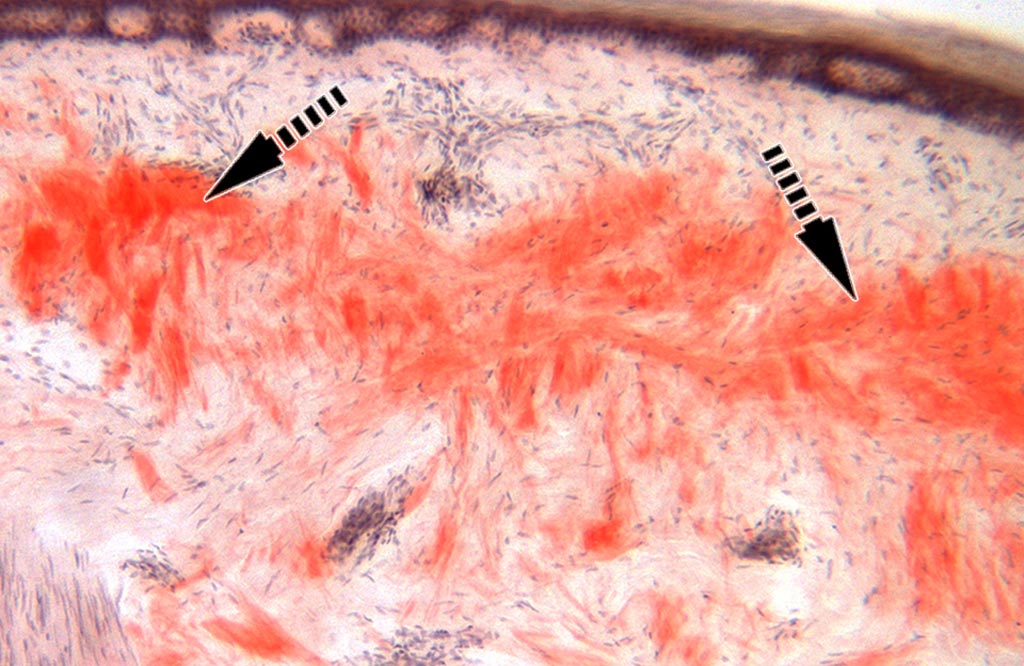Nerve Biomarkers Found for Amyloid Polyneuropathy
By LabMedica International staff writers
Posted on 19 Jul 2017
A modified skin biopsy that hastens the earlier diagnosis of an inherited and progressively fatal nerve disease has been described that seems to offer a clearer view of the disorder's severity and progression.Posted on 19 Jul 2017
People with the transthyretin amyloidosis have mutations in the DNA of the transthyretin gene, which causes abnormal buildup and deposits of a transport protein called transthyretin in nerve and heart cells. Patients typically experience progressive pain, muscle weakness and ultimately kidney, heart and other organ failure, with the disease usually manifesting itself in people ages 40 to 60 years.

Image: A histopathology of a skin biopsy from a patient with amyloidosis. Protein clumps are in red (Photo courtesy of Professor Michael Polydefkis).
Neurologists at Johns Hopkins Medicine (Baltimore, MD, USA) and their colleagues recruited 30 patients with six different genetically confirmed transthyretin amyloidosis mutations. Twenty patients had neuropathy symptoms and 10 did not. They also recruited 20 age and gender-matched healthy controls, and 20 age and gender-matched patients with diabetic neuropathy, a different form of peripheral nerve damage due to high blood sugar. Participants ranged in age from 17 to 83 and 42% were women.
Each subject had skin biopsies taken from their outer ankle and upper thigh. The biopsies were thinly sliced and stained with a dye called Congo red that allowed the scientists to view the protein clumps in the layers of skin or within the sweat glands and pilomotor muscles under the microscope. These red protein clumps looked yellowish-green when observed with a polarized lens distinguishing them from other structures in the skin sample.
They observed the protein clumps in 14 people with symptoms of neuropathy and the disease and in two people with the disease but without accompanying neuropathy symptoms. The protein clumps were not seen in any of the healthy controls or in samples from people with diabetic neuropathy. The investigators also examined skin slices from two patients with another form of nerve disease called Amyloid light-chain (AL) amyloidosis, caused by a bone marrow disorder. They could also see red protein clumps in the skin samples of these people, sparing them a more invasive nerve biopsy.
Michael Polydefkis, MD, MHS, a professor of neurology and senior author of the study said, “In the last few months, we've diagnosed several people with the disease years before the diagnosis is typically made, which has changed how we do medicine in our nerve clinic. The disability level aligned with the quantity of amyloid (protein clumps) present makes intuitive sense, but we were really amazed that the information from a small skin biopsy would correlate so well with disease severity.” The study was published on June 20, 2017, in the journal Annals of Neurology.
Related Links:
Johns Hopkins Medicine







 assay.jpg)






